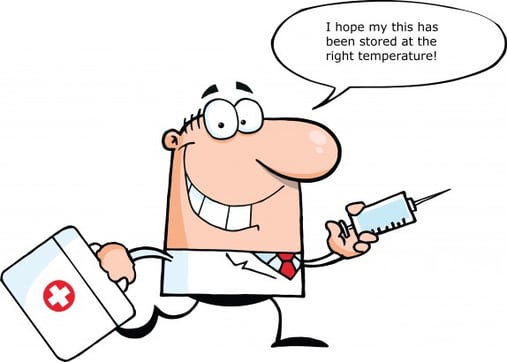1. The rules are a little wishy-washy.
Regulations, Recommendations, and Guidelines. Three different terms that mean three different things. Yet they are thrown around in quality assurance departments everywhere, with question marks all too often lingering behind them.
How do you make this language a little more consistent? By constantly asking questions, staying up-to-date on new resources, and keeping in contact with those agencies that provide the regulations. Know the ins and outs of your local or state health department, and read through any new material from the CDC, FDA, TJC, or other auditing body you must comply to. By staying up-to-date on the latest regulation changes, and then instituting those regulation changes, you can battle the wishy-washy language by having thorough documentation and the best monitoring devices and practices, all which will save you money, keep your patients safe, and help you pass an audit.
At the moment, the CDC has provided a Vaccine Storage and Handling Toolkit, which outlines recommendations for handling and storing Vaccines. There is even a resource section located at the end of the Toolkit, which provides warning signs, checklists, degree conversions, and other resources designed to help ease the stress of monitoring to their specifications.
2. Once potency is lost, it cannot be restored.
Exposure to both warm and cold temperatures can affect the potency of refrigerated vaccines, and exposure to freezing temperatures can destroy certain vaccines (HepB for example). Once a vaccine is exposed to extreme temperatures (extreme being anything out of the regulation standards) or has expired, the CDC recommends this course of action:
“If you have concerns about vaccines and/or diluents that may have been compromised (exposed to inappropriate conditions/ temperatures or handled improperly), label them “DO NOT USE” and store them under appropriate conditions separate from other vaccine supplies. If vaccines and/or diluents are expired (see Expiration Dates in the Vaccine Inventory Management section), immediately remove them from the storage unit. Then, for compromised or expired vaccines and/or diluents, contact your immunization program and/ or vaccine manufacturer(s) for guidance.”
Also, no amount of “re-cooling” or “re-heating” will restore the vaccine to be usable on patients.
Don’t take a chance, be sure that your Vaccine Cold Chain, or the part of the Vaccine Cold Chain that you make up, adheres to all regulations outlined by the CDC and your other auditing bodies. For the specifics on each vaccine's temperature range, go to the FDA’s Package Inserts Page at the Immunization Action Coalition. Each disease, and the proper storage temperature of the vaccines used to treat each disease are outlined.
3. Create a New Routine Vaccine Storage and Handling Plan every year.
Yup, every year. The goal is to produce a detailed plan for handling vaccines that employees adhere to, which includes all aspects of vaccine management. It sounds tedious, and frankly it is. But it will be beneficial, both towards you, and your employees. The CDC recommends keeping the guidelines you establish near where your vaccines are stored.
Once you have a produced a plan, update it. As new testing is done, regulations change. Make sure after you understand the changes, you institute them into your Vaccine Storage and Handling Plan.
4. Develop an Emergency Plan.
One plan is not enough! Be sure to develop, and if already developed, update your emergency plan to comply with regulatory agencies specifications. Natural disasters, power outages, and freak accidents happen. Don’t let vaccines be compromised in your part of the Vaccine Cold Chain during an emergency.
5. Educate staff not once, not twice, but always.
It may sound simple, but regulations change, and every time they do, your staff should know about it. By continually alerting them to changes in regulations, you can prevent the disastrous loss of thousands of dollars of vaccines, and more importantly prevent patients from receiving ineffective vaccines. Constantly alert and train your staff to new storage and handling plans, and expel bad habits that may have formed when plans were not updated or instituted.
DISCLAIMER: Links to cdc.gov and references to CDC are provided for informational purposes only. CDC does not endorse private products, services or enterprises.

